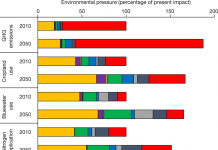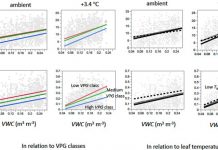【北冰洋中心海区储存大量甲烷】Xin He Liguang Sun Zhouqing Xie Wen Huang Nanye Long Zheng Li Guangxi Xing. Role of shielding and consumption of methane. Atmospheric Environment 2012 67: Pages 8–13.
Abstract
Sources and sinks of methane one of the most important greenhouse gases have attracted intensive attention due to its role in global warming. We show that sea ice in the Arctic Ocean regulates methane level through two mechanisms shielding of methane emission from the ocean and consumption of methane. Using a static chamber technique we estimated that the methane flux from under-ice water was 0.56 mg(CH4) m−2 d−1 on average in central Arctic Ocean relatively higher than that in other oceans indicating considerable methane storage in this region under sea ice. Average methane flux on under-ice water was higher than that above sea ice which suggests that sea ice could limit methane emission. In addition negative fluxes on sea ice suggest that there are methane consuming processes which are possibly associated with both photochemical and biochemical oxidation. Our results provide a general understanding about how sea ice in Arctic affects regional and global methane balance.
【Structural Biology】Adrian Cho. News Flash: X-ray Laser Produces First Protein Structure. Science 2012 338(6111): 1136 DOI: 10.1126-science.338.6111.1136.







